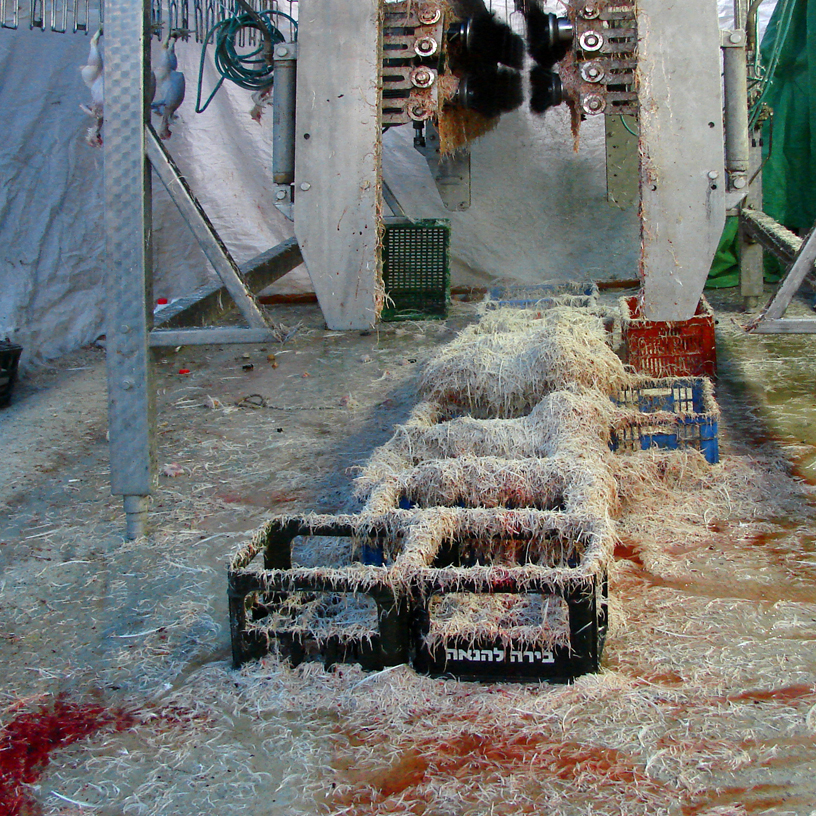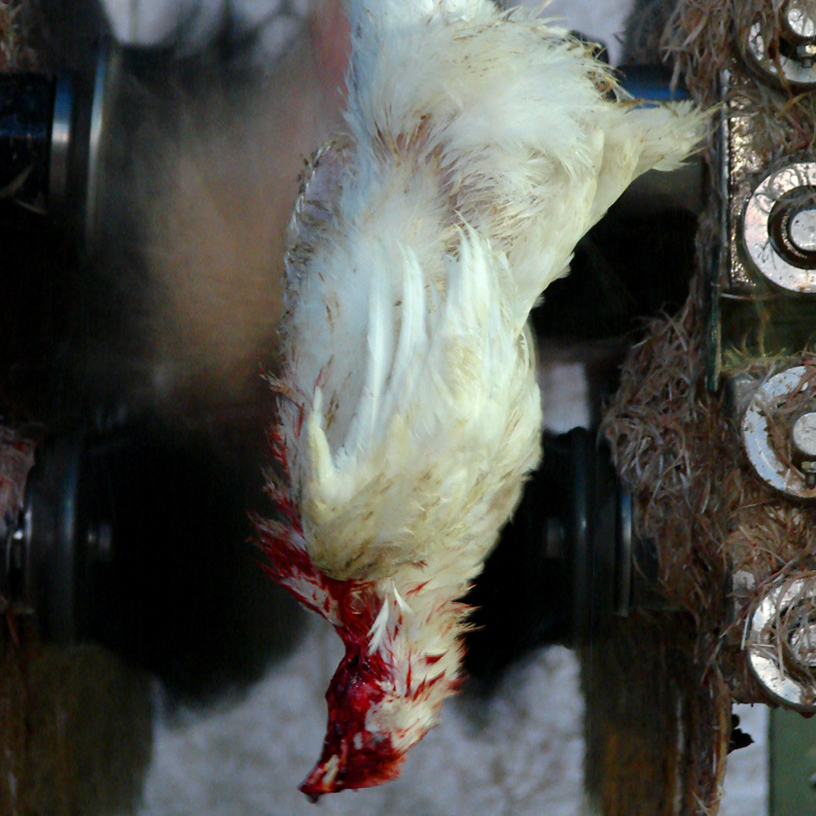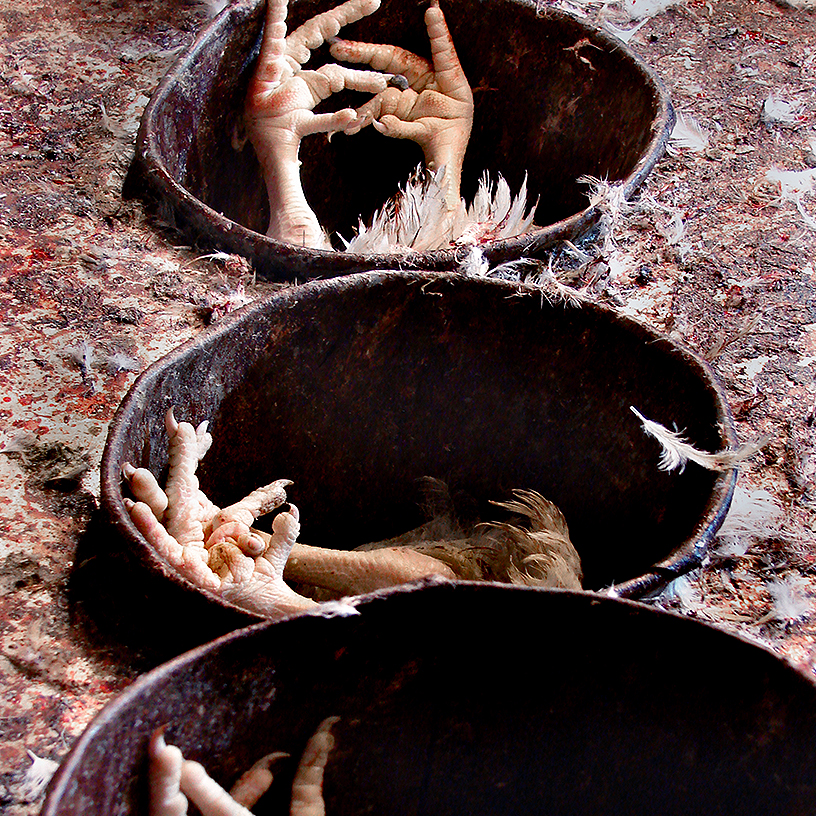KAPPAROT SERIES Photographs
Kapparot is a tradition ritual practiced by some Jews on the eve of Yom Kippur. It is a practice in which a chicken or money is waved over a person's head and the chicken is then slaughtered in accordance with halachic rules.
Kapparot was strongly opposed by some rabbis, among them Nachmanides, Shlomo ben Aderet, and the Sephardi rabbi Joseph ben Ephraim Karo in the Shulchan Aruch. According to the Mishnah Berurah, his reasoning was based on the caution that it is similar to non-Jewish rites. Some Jews also oppose the use of chickens for kapparot on the grounds of tza'ar ba'alei chayim, the principle banning cruelty to animals.
On Yom Kippur eve 2005, a number of caged chickens were abandoned in rainy weather as part of a kapparot operation in Brooklyn, New York; some of these starving and dehydrated chickens were subsequently rescued by the American Society for the Prevention of Cruelty to Animals. Jacob Kalish, an Orthodox Jewish man from Williamsburg, Brooklyn, was charged with animal cruelty for the drowning deaths of 35 of these kapparot chickens. In response to such reports of the mistreatment of chickens, Jewish animal rights organizations have begun to picket public observances of kapparot, particularly in Israel. Here's how I saw this ritual.
Media:
- – Lilia Chak,
Kapparot
, article, "ARTICULATION" No.18. Literary and Artistic Almanac.






